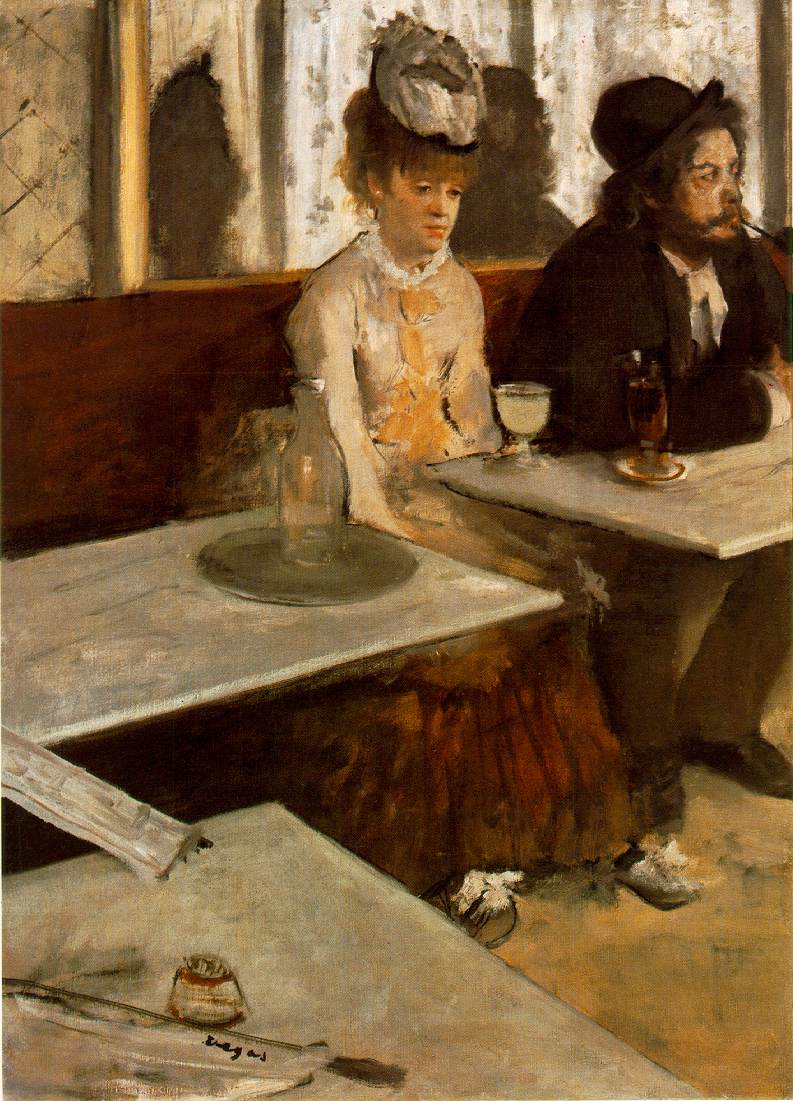She sits there in a corner of the cafe, the Absinthe drinker, in her battered hat and faded finery, her lace collar and her beribboned shoes, resembling a ragged doll clumsily dressed by a small child. Stupefied by booze, she has a weary, faraway look in her eyes. The glass on the table before her brims with the cloudy, mint-green liquid that has brought her to this point of inebriation, but she is a sad drunk, not a happy drunk. As far as she is concerned the glass is always half empty. The man next to her might be her companion, but since he is almost as far gone himself there is no way of telling. Pipe in mouth, puffy-faced from too much cheap red wine, he scowls at someone or something in an unseen corner of the shabby room. This picture of sullen dissipation is observed from the perspective of a table in the foreground where, by implication, the artist himself is seated. He has signed his name in rapid scribble beside a pot of matches on its surface. “Degas”: his way of saying that he was really there, that he really saw this.
Degas’ Absinthe is one of around 100 paintings that have been begged and borrowed by Tate


